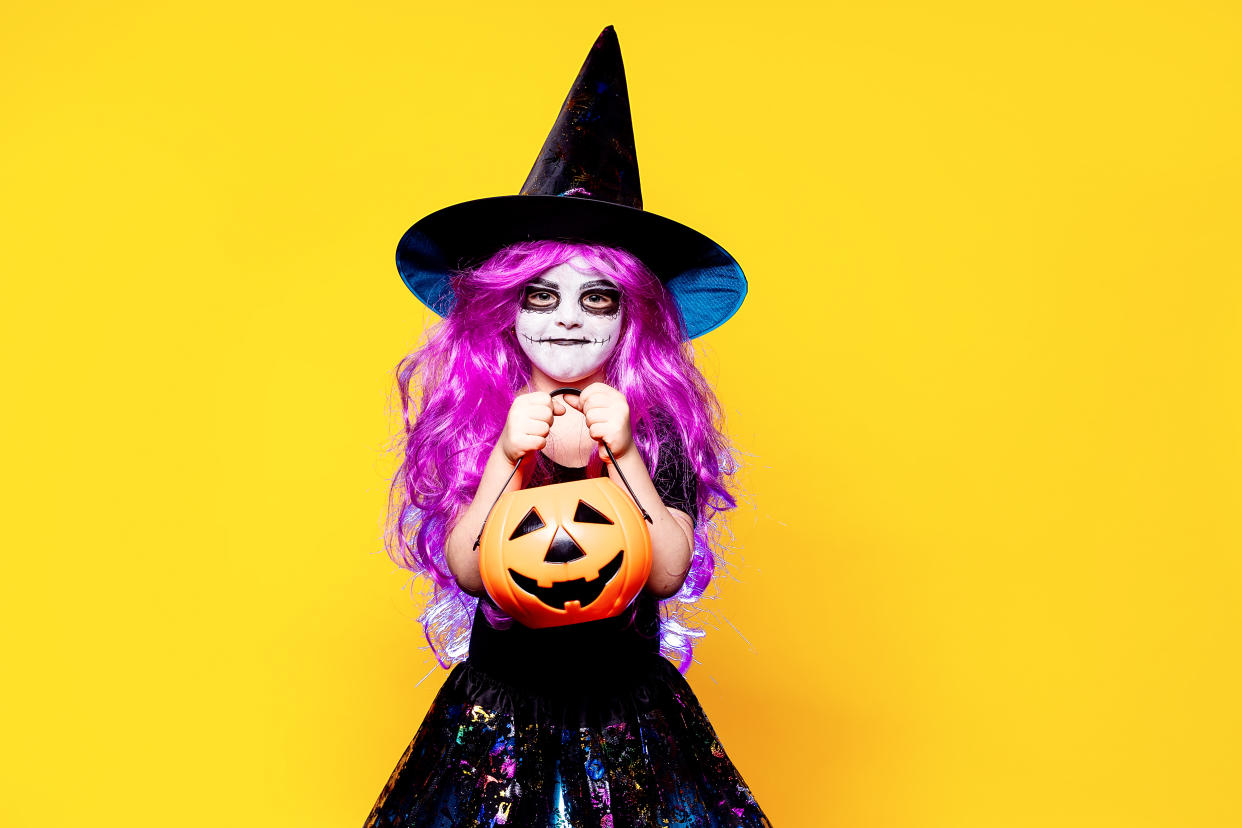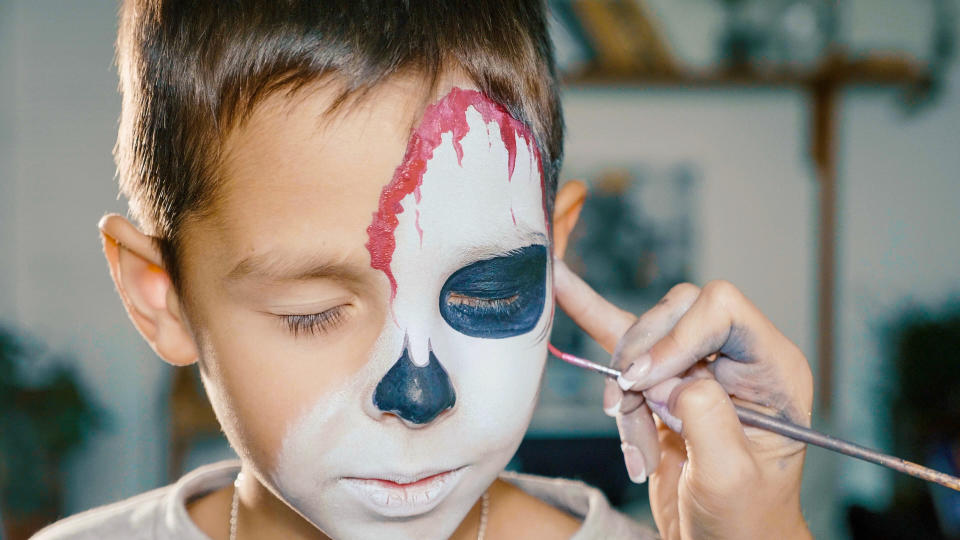Potentially harmful Halloween face paint ingredients to watch out for

Whether they’re channeling a ghost, vampire or cat, many parents rely on face paint to get their child into the spooky spirit.
But an expert warns Halloween make-up can wreak havoc with a youngster’s delicate skin, triggering itching, burning and even blisters around the eyes.
With trick or treating just around the corner, Yahoo UK asks how to prevent skin irritation and the ingredients to avoid.

“Contact dermatitis refers to a skin reaction caused by contact with an external agent, due to either an irritant or allergic reaction,” Dr Zainab Laftah, consultant dermatologist and British Skin Foundation spokesperson, told Yahoo UK.
“Children and adults can develop contact dermatitis. Those at risk are children with atopic eczema, who have an impaired skin barrier that makes their skin more susceptible to irritants and allergens.”
While most face paints are harmless, some ingredients are more likely to cause irritation than others.
READ MORE: Parents can buy their kids an 'anti-nightmare mist' for £5 to help them sleep this Halloween
“It is important to be aware when decorating your face for Halloween that some face paints may contain harmful heavy metal skin allergens, for example nickel, cobalt and chromium, at levels above industry recommendations,” Dr Laftah said.
“Although these additives produce vibrant colours, they may trigger sensitivity and allergic reactions.
“Symptoms of allergy include itching, burning, hives, and in severe cases a blistering eruption, swollen lips and eyes.”
As well as putting children at risk of severe skin irritation, Dr Laftah warns face paints may also trigger break outs in adults.
READ MORE: Beware of spooky contact lenses this Halloween
“Halloween face paint is also typically much heavier than everyday make-up and may lead to a break out in acne either through bacterial contamination or clogged pores,’ he said.
But, it’s not just face paint that could cause a reaction.
“Adhesives used in artificial nails and false eyelashes can also lead to similar reactions,” Dr Laftah said.
What to look out for in Halloween face paint
When buying face paint avoid suspicious looking websites and instead opt for high street options or sites you trust.
Safety laws for cosmetics are stringent in the UK and overseen by an EU regulatory body. Although all the ingredients used are deemed to be safe, allergic reactions still occur in rare cases.
Parents are therefore encouraged to read a product’s label carefully and look for any ingredients they know irritate their child’s skin. EU law states all cosmetics must have a complete ingredients list.
Preservatives are the most likely to trigger an allergic reaction, according to thefactsabout.co.uk
Although essential to keep face paint bacteria-free, parents should look out for the main offenders, namely formaldehyde, the website states.
They should also avoid cosmetics listing “fragrance” or “parfum” on the label. Known as “umbrella ingredients”, these can be made up of hundreds of chemicals, with manufacturers not being required to list them individually.
READ MORE: Parents are dressing their children up as Boris Johnson this Halloween
It may also be worth applying face paint to a small area of the skin a few days in advance, to check for any irritation.
“This is a simple test of applying the product on the inner aspect of your arm 24-to-96 hours before to rule out an immediate and delayed allergic reaction,” Dr Laftah said.
When it comes to fake nails, dermatologists are reportedly seeing more and more cases of skin irritation and inflammation, according to thefactsabout.co.uk.
This may occur around the nail bed or even if the fake talon touches the face.
Trouble is thought to arise when chemicals from the “acrylate” family interact with the gel or UV system used to secure the nails.
The risk can reportedly be minimised by ensuring the gel does not touch the skin and checking it is fully“cured” before exposing the nail to UV light.
Failure to do so can result in the gel remaining on the nail surface, triggering allergies.
If a skin reaction does occur, most are mild and get better on their own. Itchy skin can be relieved with damp towels, lukewarm showers and applying non-fragranced moisturisers frequently, according to the NHS.
Patting or tapping the skin, rather than scratching it, can also help.
If the irritation fails to clear up or blistering has occurred, go to the GP, who may refer you to a dermatologist.


